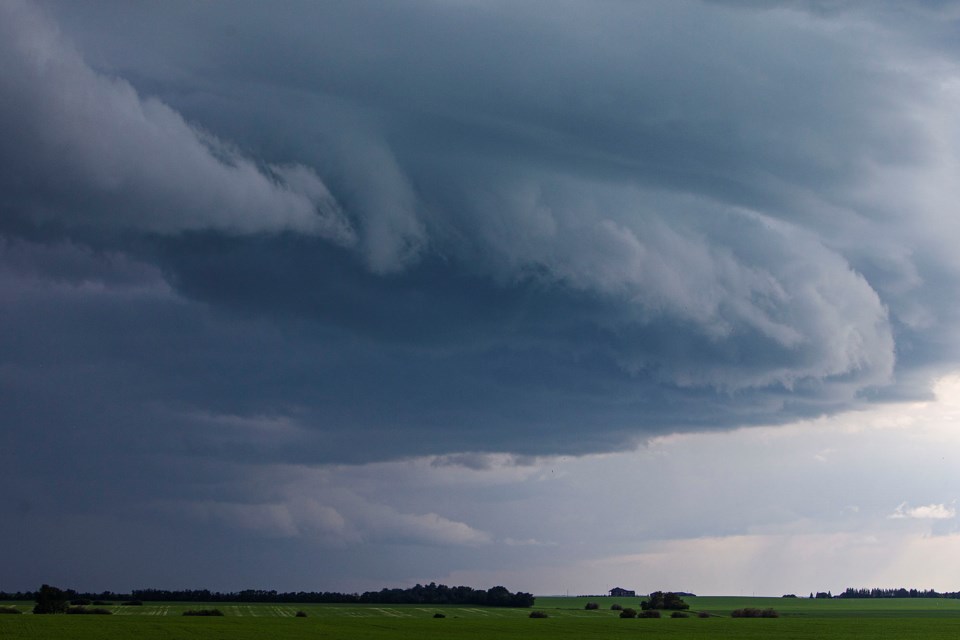The last couple of weeks in St. Albert has been a bit cooler than the average July, but the region is still trailing behind when it comes to average rainfall.
Although it seems to be raining constantly, the month of July usually gets 95.6 mm of rain. Currently the region is sitting at around one-third of that rainfall at 37 mm.
Natalie Hasell, a warning preparedness meteorologist for Environment and Climate Change Canada, said it’s common to see lots of rainfall in July.
“I think it's really hard in the Prairies to go several days without rain showers or something of the sort,” Hasell said.
So far this July, the St. Albert area has had six days without some type of rainfall, but that isn't uncommon. Despite what feels like a constant cloudy sky, the rain that is falling isn’t as heavy as it typically is and is resulting in a drier summer than usual.
Hasell said dry conditions are a common theme this year.
“We've had a series of months where conditions were quite dry,” Hasell said.
“You haven't had a lot of precipitation,” she added, noting there haven’t been a lot of big storms to dump a ton of rain on the region.
Although it has been a drier than usual year, temperatures have been slightly below normal.
“If you've had a lot of cloudy days with precipitation, it does make sense that your temperatures are not skyrocketing. You certainly haven’t had a scorcher,” Hasell said.
The average temperature for this week in July is a daytime high 23 C and a night time low of 9 C and so far this month temperatures have been a bit lower than normal.
“On average this week is below normal,” Hasell said.
“Night time temperatures are right at normal or just slightly above but it’s the daytime temperatures that are quite a bit cooler,” Hasell said.
Along with overcast skies, this July has brought in a lot of thunderstorms, which are common for this time of year.
Right now it is peak thunderstorm season across the country.
“Late-June to mid-July is definitely the most active time across the Prairies,” Hasell said.
“It continues to be quite active into August, sometimes even September.”
Hasell reminds residents to be aware of storms in the area and take shelter.
“Even non-severe storms are dangerous, and you should be planning for them. Getting access to shelter might be the best decision you make that day,” Hasell said.
Despite the fact that it may feel like there is a storm every day, it is still important to take shelter from them.
“It's very difficult especially since you've had showers and thunderstorms almost every day in the last while. You do have to live and you do have to do whatever it is you do, but it's really important to remember that severe thunderstorms are dangerous but so are non-severe thunderstorms,” Hasell said.
On Wednesday, St. Albert can expect a daytime high of 23 C and 60 per cent chance of showers with a night time temperature of 13 C. On Thursday the forecast calls for rain all day with a high of 14 C and a nigh time temperature of 9 C. The rain will continue into Friday with a high of 16 C and a night time temperature of 12 C.




